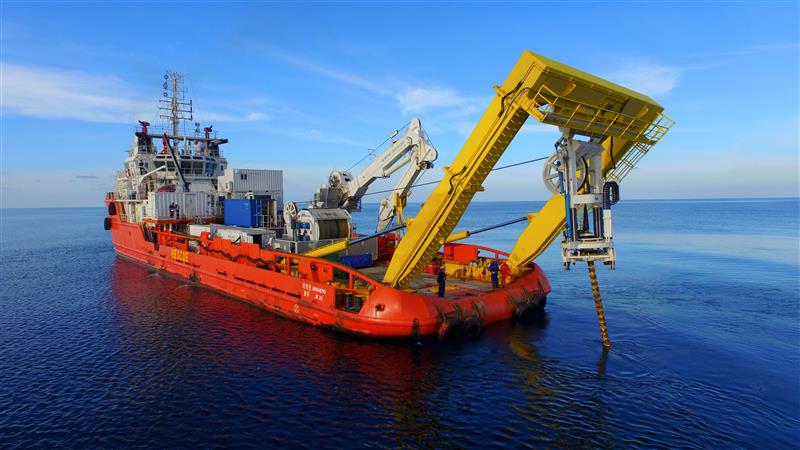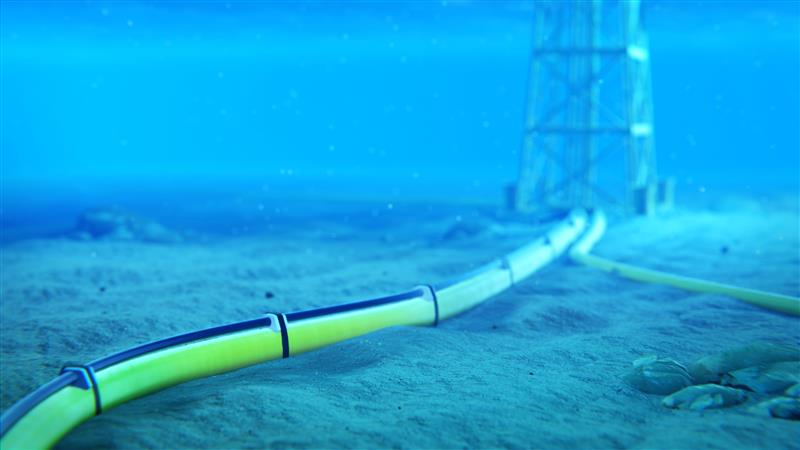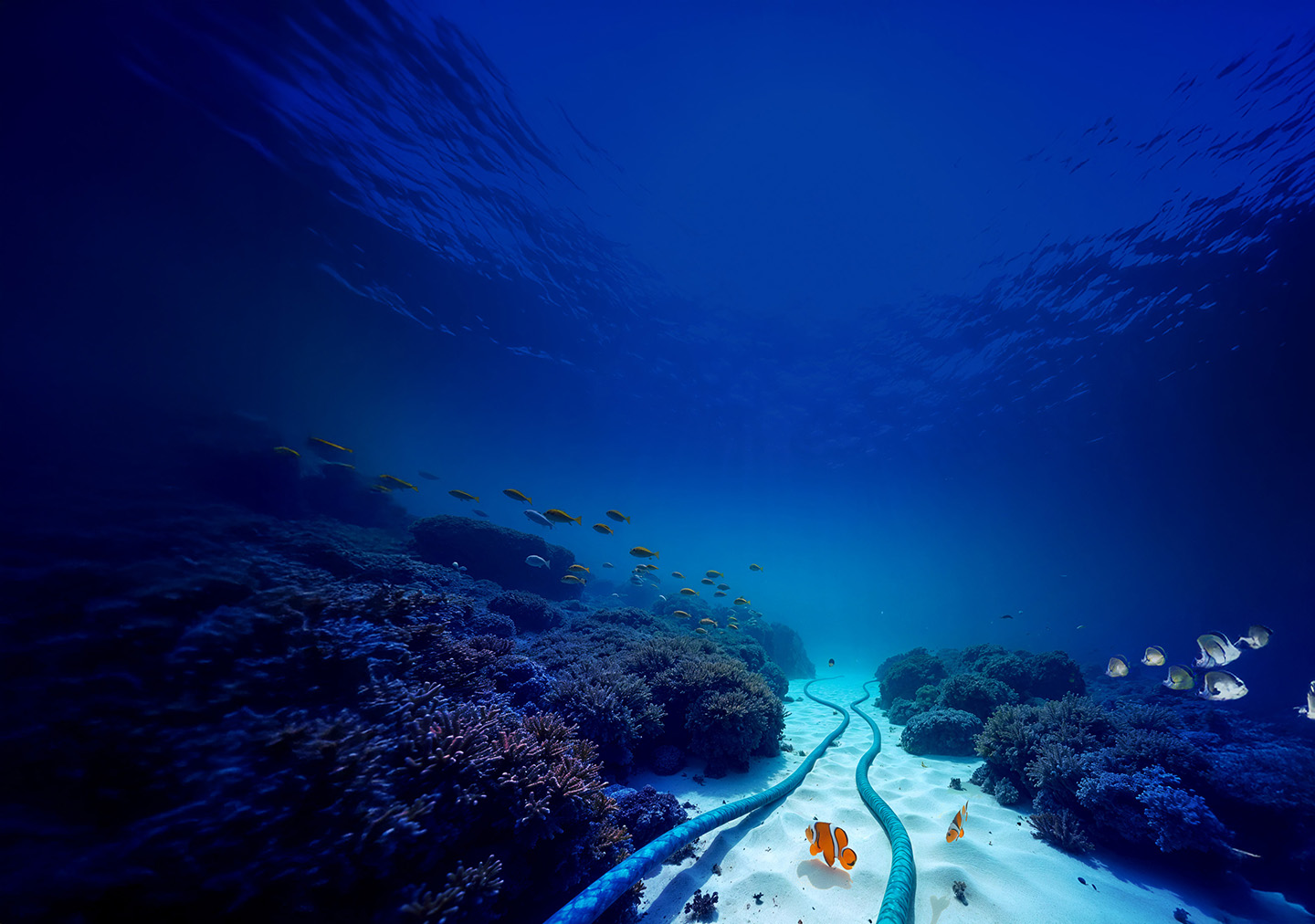We don’t often think about what lies beneath the ocean floor. But stretching across more than 1.3 million kilometers of seabed is a critical, largely invisible infrastructure that powers the modern world: the global network of undersea cables.
These cables transmit nearly 99% of intercontinental internet traffic. They enable digital communications, financial transactions, navigation, logistics, secure government operations, and military coordination—foundational services that support everyday life, global commerce, and national defense. Every day, they carry the data that drives over $10 trillion in global economic activity.
They are the connective tissue of the digital age. And increasingly, they’re under threat—as Robert Cardillo, former Director of the National Geospatial-Intelligence Agency, warned yesterday during his remarks at the GEOINT Symposium.
This week, I’m in St. Louis for GEOINT 2025, a convening of leaders focused on geospatial intelligence and national security. It’s a timely forum to examine emerging threats and strategic vulnerabilities. And few systems are more essential—or more often overlooked—than the cables that bind our world together beneath the sea.
A Global System at Risk
I learned about the importance of undersea cable infrastructure early in my career, while serving at the Office of Naval Intelligence (ONI). Even in the early 1990s, it was clear how vital these systems were to secure communications and military readiness.

Since then, our reliance on them has only deepened. The explosive growth of digital platforms, data-hungry applications, and real-time global operations means more of our economy, governance, and national security runs through these cables. But while dependence has grown, so have the risks.

In 2023 alone, the UN International Telecommunication Union recorded nearly 200 cable failures. About 80% of those incidents were attributed to human activity—anchors, fishing, construction, or tampering. Others were caused by natural hazards such as undersea earthquakes and landslides.

Incidents of deliberate interference are particularly troubling. In the Baltic Sea, off the coast of Taiwan, and in other tense geopolitical zones, recent cable outages have raised concerns about sabotage. As someone who once worked to determine state actor capabilities and intent, I remember how seriously we took even the possibility of cable disruption—and how catastrophic even a single incident could be for a nation’s connectivity and response readiness.
And for smaller or more remote countries, the consequences can be devastating. Tonga, for example, has experienced multiple national blackouts in recent years—2019, 2022, and again in 2024—when its only domestic undersea cable was damaged, cutting off communications for weeks.
Seeing the Whole Picture: The Role of Geospatial Standards
What these events make clear is that protecting undersea cables isn’t just about physical security. It’s about visibility, context, and coordination—especially across jurisdictions and sectors.
That’s where geospatial standards come in.
At the Open Geospatial Consortium (OGC), we focus on enabling better decision-making through open, consensus-based standards that support data interoperability and cross-sector collaboration. When it comes to undersea cables, these standards are an essential part of strengthening resilience and readiness.
We are proud to work closely with the International Hydrographic Organization (IHO) and, through that partnership, contribute to the efforts of the International Cable Protection Committee (ICPC)—a global body dedicated to safeguarding submarine cable infrastructure. Together, we’re helping shape the technical and policy frameworks needed to ensure undersea infrastructure is properly mapped, understood, and protected, using interoperable geospatial data.
Here’s how OGC standards make a difference:
- Interoperability and Data Integration: OGC standards provide a framework for integrating bathymetric data, maritime activity, environmental indicators, and infrastructure models. This enables a shared operational picture across defense, telecom, and environmental agencies. As noted by OGC’s CEO Peter Rabley in a February blog post, by offering a common framework for data integration, these standards ensure that diverse systems can interoperate effectively enhancing the overall security and resilience of undersea infrastructure.
- Real-Time Monitoring and Threat Detection : Standards such as OGC API – Moving Features allow for real-time tracking of vessels and other entities that may pose a threat to undersea cables. This capability is essential for early detection and rapid response to potential hazards, significantly reducing the risk of accidental (or mitigating intentional) damage.
- Modelling and Simulation Risk Management: OGC standards support the implementation of advanced risk management practices. For example, OGC API – Processes can be used to manage and execute threat model algorithms, providing valuable insights into potential vulnerabilities and supporting proactive mitigation strategies.
Applying Non-Traditional Geospatial Standards: The Case of MUDDI
While OGC standards are typically associated with surface and aerial geospatial data, they can also be applied to undersea infrastructure. The Model for Underground Data Definition and Integration (MUDDI) is one such standard that offers significant potential in the undersea domain .
Some of the most promising innovations for the undersea domain are coming from unexpected places. For example, OGC’s Model for Underground Data Definition and Integration (MUDDI)—originally developed to support subsurface urban infrastructure—has proven highly relevant for undersea applications.
With MUDDI, stakeholders can:
- Integrate diverse datasets (from environmental models to utility infrastructure)
- Make that data Findable, Accessible, Interoperable, and Reusable (FAIR)
- Support long-term planning, emergency response, and international coordination
As new cable routes are laid and existing systems are upgraded, especially through contested or sensitive regions, MUDDI can offer a common language and structure for managing complexity beneath the ocean floor.
A Strategic Imperative
The importance of submarine cable infrastructure is now recognized across the defense, intelligence, and policy landscapes. Recent reports from CSIS, NBR, and CSPS have emphasized the urgent need for stronger protections. The United Nations, in response to recent ruptures, is urging member states to implement new safeguards and coordination mechanisms.
But to move from awareness to action, we need more than declarations—we need systems that can see, share, and respond to what’s happening in real time, across borders and sectors. In a world where infrastructure is interconnected, multi-layered, and often obscured, turning complexity into clarity is essential for effective coordination and timely decision-making.
OGC’s standards are helping enable that—quietly, but meaningfully.
Closing Thoughts from GEOINT
While much of the focus at GEOINT 2025 is on emerging technologies like AI integration, space-based sensing, and multi-domain operations, it’s a timely reminder that none of these systems function without the foundational infrastructure that supports them. Undersea cable infrastructure is a critical component of the global digital ecosystem—enabling seamless communication, navigation, logistics, and economic activity across continents. Submarine cables are not just technical assets. They are strategic infrastructure. And the geospatial community has a responsibility to help protect them.
That responsibility feels especially urgent given the growing number of risks this infrastructure faces—risks that require proactive management, coordination, and mitigation. From accidental damage to deliberate interference, the threats are real, and the consequences are far-reaching.
That’s why I’m proud of the work OGC and our members are doing. Our open standards—including those not traditionally associated with undersea infrastructure, like MUDDI—offer valuable tools for enhancing the security, efficiency, and resilience of these global lifelines.
I’m grateful to our members for their continued leadership. Their commitment to collaboration and interoperability is helping ensure the reliability and robustness of this vital infrastructure—and safeguarding the systems that hold our interconnected world together.
This blog is part of our “10 Ideas in 10 Weeks” series, highlighting bold ideas and real-world innovation across the OGC community.
Explore previous insights:
- Week 1: Navigating the Era of Synthetic Imagery—Why Trust in Geospatial Data Matters
- Week 2: From Data to Decisions—Aligning for the Space Economy
- Week 3: From Wildfires to Water Scarcity—OGC’s Open Science Demonstrator Is Turning Research into Real-World Impact
- Week 4: How Esri’s Adoption of 3D Tiles Accelerates the Open Geospatial Future
- Week 5: What Lies Beneath—The Standard Making Underground Infrastructure Smarter and Safer
- Week 6: The OGC Simple Features Standard—The Silent Backbone of Modern Mapping
Follow us on LinkedIn for more stories about the people, projects, and standards shaping the future of geospatial.
Ready to Join the Conversation?
Whether you work in government, technology, science, or sustainability—if your organization depends on location, it belongs in OGC.
Join a global community of leaders advancing open standards, accelerating innovation, and solving real-world problems together.
